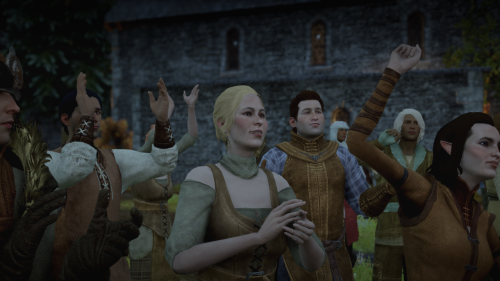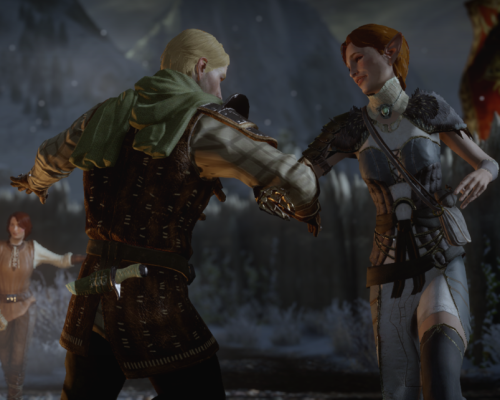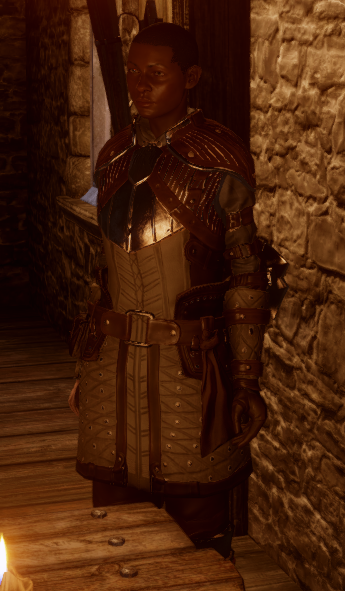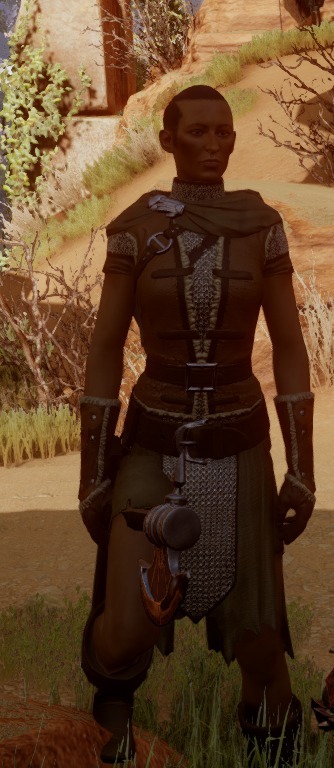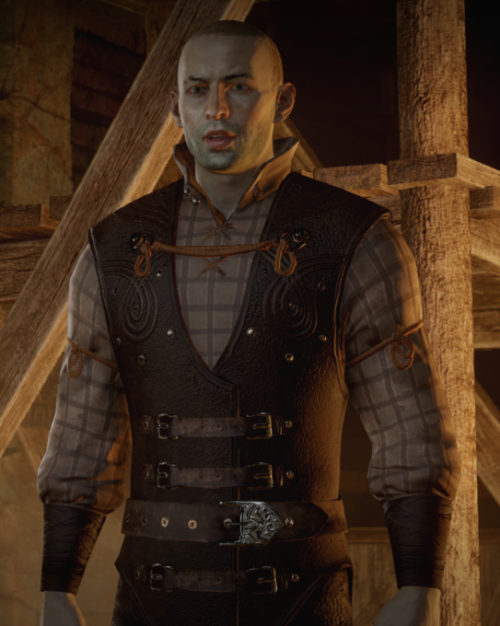DYNAMIC MAP OF FERELDEN
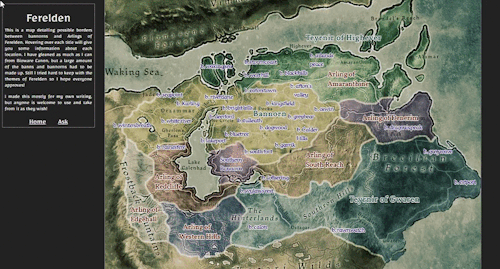

DYNAMIC MAP OF FERELDEN
In my efforts to expand the Lore around Ferelden and it’s lands, I had a thought that got a little big and unwieldy but with @ordoachao (seidrthemes) amazing help, I’ve sort of managed it! This is a map of Ferelden with names of Bannorns, Arlings and Teyrnirs which you can hover over and read more about the area. I made it for me, so it’s for writing my Characters, but anyone is welcome to use it for Roleplay or Fanfiction as they like! It is as close to canon as I can possibly go, considering how slim the actual canon is, so there is definitely some of my own ideas and interpretations in here.
However, whilst I’ve written a whole bunch for a lot of the areas already, there are a ton of Bannorns that require addition and some of the places are lacking in detail. I’m very open too SUBMISSIONS, SUGGESTIONS AND FEEDBACK. You wanna design a Bannorn? Add a Lord to a Bannorn or a Character into a place’s history? Feel free to submit your ideas to me! Let’s populate Ferelden with our ideas!!
- Inspiration for the Borders of all the Lands from HERE and HERE
More Posts from Worlds-of-thedas and Others









Daemon Age: Inquisition
Vivienne & Adelbhert
Mute Swan (Cygnus olor)
It is said that during her Harrowing, Madame de Fer refused to leave the Fade until she settled as a form which pleased her. Vivienne has not dispelled such rumors. Adelbhert is much like his human in style and strength. His wing strokes can break bones; his bite is crushing; and he looks impeccable! Beneath all the glamour lies a hardworking soul, whose efforts are rarely seen yet always rewarded. And he’s frightening.


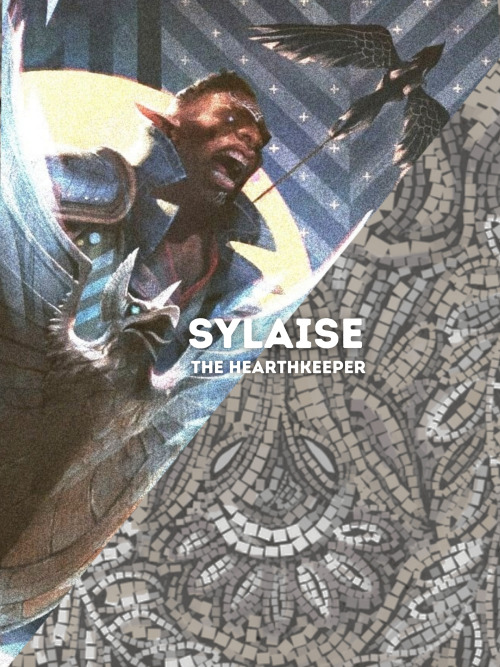




It is calming to see something familiar in another
inspo x x
I’m replaying the Jaws of Hakkon dlc and it really has me mulling over the sheer loneliness of our Inquisitor’s situation.
The Hero of Ferelden gained their title and status after they had already bonded with their companions and stopped the blight. Hawke is known for their dysfunctional polycule/found family. Rook is in the same boat.
But the Inquisitor became a symbol before they even had a chance to really get to know anyone. Every other protagonist leads a group of companions, meanwhile the Inquisitor leads a political and military force. Sure, they still become close with some of their companions and advisors, but everyone constantly reminds them of their status as a holy symbol and how intimidating and unapproachable it makes them.
You can literally tell Varric, Mr. Friends-With-Everyone, “I don’t need a disciple, I need a friend” and he’ll reply “If you knew how intimidating you are, you wouldn’t make it sound so simple”. Imagine how isolating it must be to keep hearing that.



𝑚𝑢𝑠𝑖𝑐 𝑜𝑓 𝑡ℎ𝑒𝑑𝑎𝑠; 𝑟𝑖𝑣𝑎𝑖𝑛 🌻 𝑇ℎ𝑒 𝑤𝑎𝑟𝑚 𝑤𝑎𝑡𝑒𝑟𝑠 𝑜𝑓 𝑅𝑖𝑣𝑎𝑖𝑛 𝑤𝑎𝑠ℎ 𝑜𝑣𝑒𝑟 𝑦𝑜𝑢𝑟 𝑓𝑒𝑒𝑡 𝑎𝑠 𝑦𝑜𝑢 𝑙𝑜𝑜𝑘 𝑡𝑜𝑤𝑎𝑟𝑑𝑠 𝑡ℎ𝑒 𝑠𝑒𝑡𝑡𝑖𝑛𝑔 𝑠𝑢𝑛. 𝑇ℎ𝑒𝑛, 𝑡ℎ𝑒 𝑠𝑚𝑒𝑙𝑙 𝑜𝑓 𝑤𝑒𝑙𝑙 𝑐𝑜𝑜𝑘𝑒𝑑 𝑓𝑜𝑜𝑑 𝑓𝑖𝑙𝑙𝑠 𝑦𝑜𝑢𝑟 𝑠𝑒𝑛𝑠𝑒𝑠 𝑎𝑛𝑑 𝑦𝑜𝑢 𝑑𝑒𝑐𝑖𝑑𝑒 𝑡𝑜 𝑤𝑎𝑛𝑑𝑒𝑟 𝑖𝑛𝑡𝑜 𝑡𝑜𝑤𝑛 𝑡𝑜 𝑓𝑖𝑛𝑑 𝑡ℎ𝑒 𝑠𝑜𝑢𝑟𝑐𝑒. 𝑇ℎ𝑒𝑟𝑒 𝑎𝑟𝑒 𝑎𝑠 𝑚𝑎𝑛𝑦 𝐸𝑙𝑣𝑒𝑠 𝑎𝑛𝑑 𝑄𝑢𝑛𝑎𝑟𝑖 𝑎𝑠 𝑡ℎ𝑒𝑟𝑒 𝑎𝑟𝑒 ℎ𝑢𝑚𝑎𝑛𝑠 ℎ𝑒𝑟𝑒, 𝑎𝑛𝑑 𝑦𝑜𝑢 𝑒𝑛𝑗𝑜𝑦 𝑡ℎ𝑒 𝑠𝑖𝑔ℎ𝑡 𝑜𝑓 ℎ𝑎𝑟𝑚𝑜𝑛𝑦 𝑏𝑒𝑡𝑤𝑒𝑒𝑛 𝑡ℎ𝑒𝑠𝑒 𝑐𝑢𝑙𝑡𝑢𝑟𝑒𝑠. 𝑀𝑎𝑛𝑦 𝑜𝑓 𝑡ℎ𝑒 ℎ𝑢𝑚𝑎𝑛𝑠 ℎ𝑎𝑣𝑒 𝑒𝑙𝑒𝑔𝑎𝑛𝑡 𝑡𝑎𝑡𝑡𝑜𝑜𝑠 𝑝𝑎𝑖𝑛𝑡𝑒𝑑 𝑜𝑣𝑒𝑟 𝑡ℎ𝑒𝑖𝑟 𝑏𝑜𝑑𝑖𝑒𝑠 𝑎𝑛𝑑 𝑦𝑜𝑢 𝑡ℎ𝑖𝑛𝑘 𝑡ℎ𝑎𝑡 𝑝𝑒𝑟ℎ𝑎𝑝𝑠 𝑦𝑜𝑢'𝑙𝑙 𝑔𝑒𝑡 𝑦𝑜𝑢𝑟𝑠𝑒𝑙𝑓 𝑎 𝑑𝑒𝑐𝑜𝑟𝑎𝑡𝑖𝑜𝑛 𝑏𝑒𝑓𝑜𝑟𝑒 𝑦𝑜𝑢 𝑙𝑒𝑎𝑣𝑒. 8𝑡𝑟𝑎𝑐𝑘𝑠 / 𝑌𝑜𝑢𝑡𝑢𝑏𝑒






DRAGON AGE II + mentioning the hero of ferelden
Thinking about the mage rebellion and Fereldan. My main Warden is a Surana that sticks Alistair with the throne so I never really gave it much thought about why Ferelden's ruler would accept the rebellion.
But I replayed and something stuck out to me: Connor was frustrated about them being in Redcliffe. He asks how that could be seen to be a good idea. And honestly? Given that the Wardens rule Amaranthine and it's a major point of entry from the sea it wouldn't be that hard to have set Fiona's people there and gotten fewer side eyes by the locals. They're used to Wardens, mages ain't that weird in comparison. Especially after the Warden-Commander let a possessed corpse follow them home from the swamp like a lost mabari.
But Ferelden has a population problem. Lots of dead young men and women just at Ostagar, let alone the southern hills, the bannorn via the rebellion, and Denerim. And the survivors of the Siege at Denerim would have had high chances of Blight Sicknesses, there were probably epidemics following 9:31. That would have crippled the fighting population. That doesn't even count that a lot of the refugees who made it to the Marches and elsewhere never returned.
Redcliffe is the fortified gateway to Ferelden from the /Orlesian/ border. The same Orlais that certain powers (Gaspard) want to return to being an expanding empire.
Celene's hold was weak. Weak enough the Inquisitor could arrange to break it entirely.
The Chantry is primarily Orlesian and that would give the mages a reason to not want Orlesian control if it came down to Gaspard as Emperor bringing chevaliers back across the Frostbacks.
I don't think Ferelden took the mages in out of generosity. At least not entirely. I think they saw a chance to add a significant military force to their country if their gamble paid off - and that's why Teagan agreed. Unfortunately for the rebellion the Tevinter thing is a definite point of no return - the mages weren't loyal enough to their own cause, to where they were, to continue the risk of keeping them.
the basics of tevinter politics and social classes, as laid out in world of thedas and a little elsewhere
the archon is the supreme ruler of the imperium. their authority and magical power is believed to be divinely granted. they choose their successors before they die, so they are usually the sons, nephews, brothers, cousins, or apprentices of previous archons. (this phrasing implies that, like the black divine, the archon is always a man, and certainly the several named ones we know all are, but i’m not sure if this is necessarily always true.) if an archon does not choose his heir before he dies, the magisterium elects the next; these candidates cannot be magisters or hold rank in the chantry. technically the archon can overrule the laws passed by the magisterium, but he rarely does this. his power mostly stems from families vying for his favour, as he has the unique power to appoint magisters at will. a man named radonis is the current archon; he’s appeared in comics and a war table mission.
the magisterium are the mage elites who regularly gather to govern the imperium and pass laws. magisters become magisters in several ways:
one is chosen from each of tevinter’s seven circles of magi. it cannot be that circle’s first enchanter
the imperial divine and every grand cleric of the imperial chantry gets a seat
magisters can inherit seats
as i mentioned, the archon has the right to appoint any new magister if he chooses
tevinter society breaks down into four major social classes.
the first mage class is the altus class. these are descended from the original “Dreamers”, through ancient and wealthy magical bloodlines. most magisters come from altus families. characters like dorian and danarius belong to this class.
other mages belong to the laetan class. these are mages who cannot trace their ancestry to the dreamers, and may belong to families with no history of magic at all. many vie for power despite their origins, and one third of the imperium’s archons have been laetans. (the first laetan to rise to archon was such an outrage it caused a seventy year civil war, but that was, like, 1500 years ago-ish. they’re more chill about it now.) it feels safe to assume that neve gallus, who says in tevinter nights that she doesn’t feel at home in a wealthy estate because she has more templars in her family than mages, probably belongs to this class.
the soporati are non-mages who are still full tevinter citizens. they are allowed to own property and serve in the military, but they cannot have a direct say in government or rise above the rank of mother/father in the chantry. they can however be civil servants and merchants. a mage born to a soporati family is instantly a laetan.
slaves are not allowed to own property, or to hold military rank even when armed and serving as a personal soldier or bodyguard. they have become a more even mix of humans and elves since andraste’s time. mages can be slaves. if a slave is set free, either by their living owner before a judge or by their owner’s will upon their death, they are considered liberati. liberati are still not citizens and cannot have political say or hold military rank, but they can join a circle of magi, get an apprenticeship in a trade, take apprentices themselves, and own property. fenris was a slave, while his sister varania was implied to have become one of the liberati.
there is also a large surface dwarf population in tevinter. they are not considered citizens, but instead regarded as foreign dignitaries however many generations their families have lived in tevinter. they have large embassies in every major tevinter city, which at least in minrathous, neromenian, and qarinus are completely subterranean, meaning residents can retain their dwarven caste and may never come above ground all their lives. minrathous’ close ties to the dwarves mean it even has a massive proving grounds, as well as enormous stone golems known as juggernauts to guard the city gates. more than anywhere else in thedas, the dwarves do get a political say, with an elected body of representatives called the ambassadoria who advise the archon and the magisterium. it’s the imperium’s reliance on lyrium which gives them this kind of sway.
Languages of the Dragon Age
I am not a linguist. I have had loose associations with linguists in the past; I am at best passingly familiar with some general or interesting features of a scattered handful of languages and writing systems. This is more than enough to despise the way Dragon Age lore handles languages.
“Trade Tongue” is a convenient device for streamlined storytelling—you don’t have to worry about characters being able to understand one another—but it’s in the absolute top tier of poor world-building, especially for a fantasy medieval setting where information travels slowly and most people aren’t going to be doing much travel at all.
So, on the basis of some off-the-cuff reflection and with utter disregard for canon linguistics (aside from canonical names and vocab), I present a sketch of the known languages, and language families, of Thedas in the Dragon Age:
~ ~ ~ ~ ~ ~
Proto-Alamarri: Originating between the Waking Sea and the Frostback Mountains, the Alamarri language family is the most diverse in modern Thedas; Alamarri languages share phonetic and structural features with real-world Celtic and Germanic languages.
Fereldan: The common and court language of the kingdom of Ferelden; its use was suppressed among the nobility during the Orlesian occupation, but to little effect in the long term; it shares features with the Welsh and Gaelic languages.
Chasind: The language of the nomads who inhabit the Korcari Wilds south of Ferelden; although evidently related to its neighboring languages, it is not written and is little attested outside the Chasind tribes.
Avvar: Spoken by the semi-nomadic peoples of the Frostback Mountains, Avvar shares certain phonetic features with Andrisch by linguistic convergence.
Rivaini: The popular language of most of Rivain, to which the first Alamarri speakers came before the Tevinter period. Its vocabulary is strikingly varied from other Alamarri languages, including significant Neromenian borrowings, although it retains distinctively Alamarri phonology.
Andrisch: The dominant language of the Anderfels, Andrisch is less closely related to other Alamarri languages than any other pair in the family; it parallels real-world Germanic languages.
Marcher: The common speech of the Free Marches, characterized by its heavily Neromenian vocabulary fitted to Alamarri grammar. Spoken with significant regional lexical variation from Kirkwall to Ansburg and Wycome.
Neromenian: Originating in north-central Thedas, the Neromenian languages are the most widely spoken in the modern world; they correspond to real-world Romance languages.
Tevene: The language of the Tevinter Imperium and closest to (though by no means intelligible with) Neromenian, it has three distinct but mutually intelligible dialects in modern Thedas.
Classical: The dialect of Tevinter’s upper classes, featuring some modifications to vocabulary and pronunciation but grammatically very close to the Tevene of the old Imperium.
Vulgar: The dialect—or, more properly, dialects—of Tevene’s non-mage and slave castes, featuring significant regional variation, altered vocabulary, and grammatical innovations.
Arcanum: Not actually spoken in Tevinter, Arcanum is a preserved academic form of Ancient Tevene read (and loosely “spoken”) in southern Circles of Magi.
Orlesian: The language of the Orlesian Empire, Orlesian takes much of its vocabulary from languages of the Alamarri and Planasene families, although its grammatical structure remains distinctively Neromenian. Orlesian is the most widely spoken language in southern Thedas, used to facilitate trade between non-Orlesian kingdoms (although this is often lamented as a sign of persistent Orlesian influence).
Antivan: The language of the kingdom of Antiva, Antivan differs from Orlesian in the historical timing of its word loans and the decidedly higher concentration of Neromenian and Alamarri vocabulary.
Planasene: Originating in south-central Thedas, Planasene culture was largely wiped out by successive Tevinter and Orlesian expansion.
Nevarran: The only surviving Planasene language, sharing features of Classical Greek and Avestan, with significant influence from surrounding Neromenian languages, especially Orlesian.
Dwarven: The dominant language of the dwarven trade empire by the time of the First Blight, preserved in remarkably stable form in the surviving thaigs of Orzammar and Kal-Shirok. Its grammar and phonology parallel Uralic languages, especially Hungarian; it is written in an alphabetic runic script which is the basis for most human writing systems.
Elvhen: The language which was dominant in Arlathan before the rise of Tevinter, it is now spoken among the Dalish clans in diversely modified form, often drawing on regional human languages to replace vocabulary lost under Tevinter domination; these dialects are, however, transmitted carefully to ensure that they remain mutually intelligible. Elven script is alphabetic and unrelated to other Thedosian writing systems.
Qunlat: The language of the Qunari people and organized ideology, unrelated to the other languages of Thedas. Qunari script is logo-syllabic.
i think bioware should let the hero of ferelden return but every time they're in a shot they're cut off at the neck like the lady from powerpuff girls

and every time they try to add something to a conversation a dragon flies by roaring so you can't hear what they're saying
-
 hinataelyontoph liked this · 1 month ago
hinataelyontoph liked this · 1 month ago -
 ellsterthinks reblogged this · 5 months ago
ellsterthinks reblogged this · 5 months ago -
 the-fade-walker liked this · 10 months ago
the-fade-walker liked this · 10 months ago -
 wickedspeak liked this · 2 years ago
wickedspeak liked this · 2 years ago -
 radbanditgooplight liked this · 2 years ago
radbanditgooplight liked this · 2 years ago -
 worlds-of-thedas reblogged this · 2 years ago
worlds-of-thedas reblogged this · 2 years ago -
 impalemevladdy liked this · 2 years ago
impalemevladdy liked this · 2 years ago -
 jesse-wilder reblogged this · 3 years ago
jesse-wilder reblogged this · 3 years ago -
 dreadfulsanity liked this · 3 years ago
dreadfulsanity liked this · 3 years ago -
 greengooseworld liked this · 3 years ago
greengooseworld liked this · 3 years ago -
 ghoulifiied liked this · 3 years ago
ghoulifiied liked this · 3 years ago -
 teryster liked this · 3 years ago
teryster liked this · 3 years ago -
 thuviel reblogged this · 3 years ago
thuviel reblogged this · 3 years ago -
 amazingracesilver liked this · 3 years ago
amazingracesilver liked this · 3 years ago -
 zeesqueere reblogged this · 3 years ago
zeesqueere reblogged this · 3 years ago -
 firlalaith reblogged this · 3 years ago
firlalaith reblogged this · 3 years ago -
 cobaltart liked this · 3 years ago
cobaltart liked this · 3 years ago -
 nessacousland liked this · 3 years ago
nessacousland liked this · 3 years ago -
 softbladee reblogged this · 3 years ago
softbladee reblogged this · 3 years ago -
 autumnhunter1 liked this · 3 years ago
autumnhunter1 liked this · 3 years ago -
 flashgloria reblogged this · 3 years ago
flashgloria reblogged this · 3 years ago -
 flashgloria liked this · 3 years ago
flashgloria liked this · 3 years ago -
 steampunkcorgis reblogged this · 3 years ago
steampunkcorgis reblogged this · 3 years ago -
 steampunkcorgis liked this · 3 years ago
steampunkcorgis liked this · 3 years ago -
 kaalshya reblogged this · 3 years ago
kaalshya reblogged this · 3 years ago -
 sirotras reblogged this · 3 years ago
sirotras reblogged this · 3 years ago -
 wewerewildonce--nowwary reblogged this · 3 years ago
wewerewildonce--nowwary reblogged this · 3 years ago -
 wewerewildonce--nowwary liked this · 3 years ago
wewerewildonce--nowwary liked this · 3 years ago -
 amber-eyes-and-sapphire-skies liked this · 3 years ago
amber-eyes-and-sapphire-skies liked this · 3 years ago -
 chillybee reblogged this · 3 years ago
chillybee reblogged this · 3 years ago -
 biotic-boshtet reblogged this · 3 years ago
biotic-boshtet reblogged this · 3 years ago -
 stoupax reblogged this · 3 years ago
stoupax reblogged this · 3 years ago -
 sodaisgayplastic liked this · 3 years ago
sodaisgayplastic liked this · 3 years ago -
 didnotstopweepingforninedays liked this · 3 years ago
didnotstopweepingforninedays liked this · 3 years ago -
 skogrr liked this · 3 years ago
skogrr liked this · 3 years ago -
 creaking-skull liked this · 3 years ago
creaking-skull liked this · 3 years ago -
 vlwv liked this · 3 years ago
vlwv liked this · 3 years ago -
 stoupax liked this · 3 years ago
stoupax liked this · 3 years ago -
 lilly-ellinor liked this · 3 years ago
lilly-ellinor liked this · 3 years ago -
 inukag liked this · 3 years ago
inukag liked this · 3 years ago -
 xcaptainbluex reblogged this · 3 years ago
xcaptainbluex reblogged this · 3 years ago -
 xcaptainbluex liked this · 3 years ago
xcaptainbluex liked this · 3 years ago -
 bigfan-fanfic liked this · 3 years ago
bigfan-fanfic liked this · 3 years ago -
 meticulousfragments liked this · 3 years ago
meticulousfragments liked this · 3 years ago -
 pinayelf-archive reblogged this · 3 years ago
pinayelf-archive reblogged this · 3 years ago

A collection of canonical and non-canonical lore of Thedas, and archive of the amazing meta this fandom has produced. All work will be properly sourced and any use of other's work should conform to their requests. (icon made by @dalishious)
72 posts
